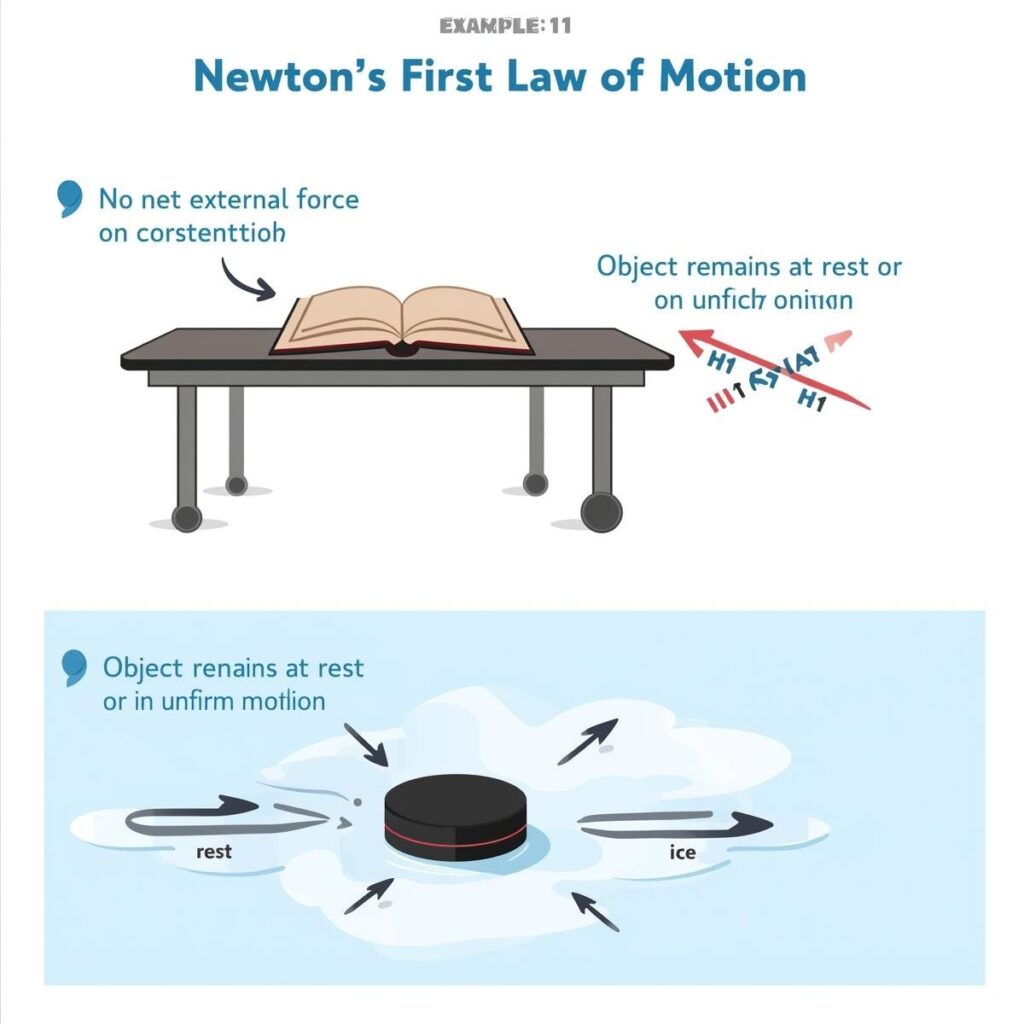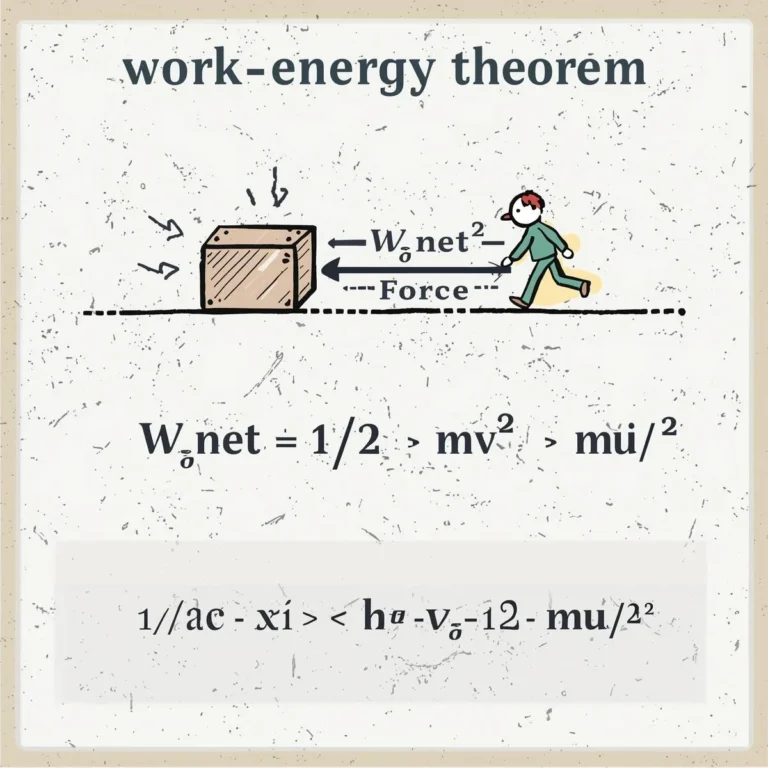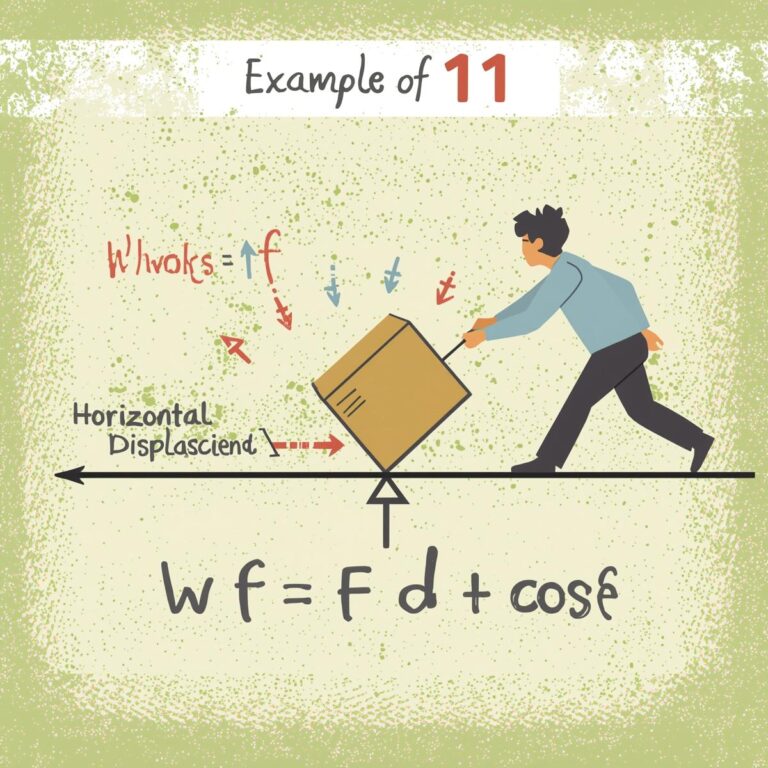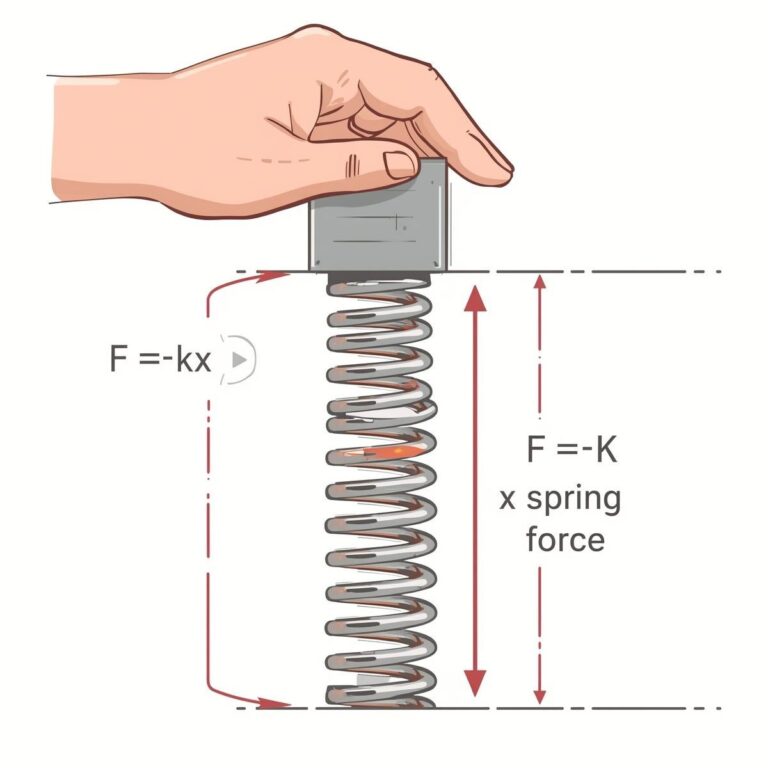Definition
Newton’s First Law of Motion states that an object remains at rest or in uniform motion in a straight line unless acted upon by an external unbalanced force. This law is also known as the law of inertia.
Explanation
- If the net external force on a body is zero, its velocity remains constant.
- The law explains the natural tendency of objects to resist changes in their state of motion.

Formula
The law itself does not have a direct formula, but it is the basis for the equation of motion: F = 0 ⇒ v = constant
Where:
- F = net external force
- v = velocity of the object
Derivation
Newton’s First Law is a qualitative statement and does not require mathematical derivation. However, it is a special case of Newton’s Second Law (F = ma) when the net force (F) is zero:
If F = 0, then
ma = 0
So, a = 0
This means the object’s velocity (v) does not change; it remains at rest or moves with constant velocity.
Example
- A book lying on a table remains at rest until someone applies a force to move it.
- A moving car will continue to move at the same speed in a straight line unless brakes are applied or it hits an obstacle.
Illustrative Image
Summary Table
| Aspect | Description |
|---|---|
| Law Name | Newton’s First Law (Law of Inertia) |
| Statement | A body remains at rest or in uniform motion unless acted upon by an external force |
| Formula | F = 0 ⇒ v = constant |
| Example | Book at rest, car moving at constant speed |



